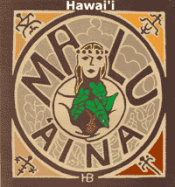the Passing of Dear Friend Carol Murry
Thursday, Aug. 31, 2023
Aloha Peacemakers,
I received the email below yesterday from retired Army Colonel, Ann Wright, about the passing of dear friend, and long time Hawaii resident, Carol Murry. She was 82. Carol was a retired doctor of Public Health and a justice, peace, and environmental activist. She was part of Women for Peace in Palestine and visited Palestine on several occasions, suffering percussion grenades and tear gas. She was also the initiator of the article below on the hazards of Depleted Uranium in Hawaii published in various Hawaii newspapers in 2017
Jim
-- Jim Albertini Malu 'Aina Center For Non-violent Education & Action P.O. Box 489 Ola'a (Kurtistown) Hawai'i 96760 Phone 808-966-7622 Email ja@malu-aina.org Visit us on the web at www.malu-aina.org
Aloha Everyone,
WHAT IS BLOWING IN THE PTA WIND?
DU is seen as an emerging environmental pollutant introduced primarily by military activity. The previous use of Depleted Uranium (DU) within Pohakuloa Training Area (PTA) followed by repeated live-fire exercises, as are currently occurring, provide a serious threat to public health.
The 133,000 acre PTA is located on the Island of Hawai’i in the saddle between Mauna Kea and Mauna Loa. Repetitive shelling, starting in the 1960s in areas of PTA where DU use is known to have occurred in the past, is well documented and presents health risks due to resuspension of dust, potentially contaminated by DU and its oxides.
The risks to those, who may be exposed to contaminated dust through use of the Mauna Kea County Park, Girl Scout camp, Army garrison, and the road adjacent to PTA, need to be measured and addressed. Children, especially, are known to have higher risk as they breathe more rapidly and deeply than adults, may also ingest dust, and have a longer exposure as it takes them a longer time to clear DU. A Pentagon briefing on uranium munitions cites serious concerns for children due to resuspension and long distance redistribution of DU oxides being deposited on playgrounds, schools and backyards and also entering the food chain via cattle grazing on contaminated crops.
We advocate for a well-designed survey to determine the potential harm of live fire exercises at Pohakuloa. It is reckless to understate the risk of DU exposure in relation to the benefits of live fire training when we don’t know the true risk, as there has been no reliable survey. Once we know the true risks, we can consider alternatives. In the meantime and in the interest of public safety, if it cannot be proven that the dust of Pohakuloa is not harmful, then all that can be done to minimize the creation of DU aerosols in that dust must be initiated. We must be clear that the greatest risk would be from DU and DU oxide dust particles, not from chunks of DU as postulated in previous claims. Inhalation is the primary source of risk from DU to the people of the Big Island.
To give a blanket acceptance of the status quo in the name of national security would lead us down a slippery slope of unethical experimentation. This unethical argument was raised during the Nuremberg trials and occurred again during Cold War hearings of the US Congress in 1994. The latter hearing strongly pointed out that mass exposure of communities to unknown risks without their consent is just as “experimental” and unethical as if it were done to individuals in a clinical setting. To be ethical, the rules of informed consent must be followed – with each individual deciding for themself if they and their families are to be exposed.
Those in positions of authority, including regulators, legislators and courts must be cognizant of that right. The public should not be “collateral damage” to what may be blowing in the wind.
A previous article by Tom Callis on DU (Hilo Tribune Herald, April 16, 2017) reveals conflicting dogmas still exist related to use of DU on Hawai’i Island. For example, PTA spokesman Eric Hamilton is quoted as saying that high explosives are not used in the radiological control areas where spotting rounds were fired. In contrast, Jeff Eckerd of Hawai’i Department of Health is quoted as saying that the dry stream bed is the more likely pathway for migration of DU since the DU would only travel a couple hundred yards if aerosolized through use of high explosives in the impact area. This belies statements that they have not used explosives where spotting rounds were fired. In any event, it must be realized that aerosolized DU will more likely be transported further than solid chunks moving down a streambed.
It is critical to pay respectful attention to the cautions of those who have dedicated their lives to assuring public health and safety. Some of those contributing to this article served in the military, and one was critically injured by DU exposure, and still suffers the terrible consequences. They served their country in uniform and now courageously with many others have dedicated themselves to assuring safety of those who may be endangered by military activities and “what is blowing in the wind”. Now is the time for us to work together to assure a safe future for all.
Contributing authors, writing as private citizens:
- Lorrin W Pang, MD/MPH –Medical, Public Health and Military DU, Maui County District Health Officer with 25 years experience as a Preventive Medicine Officer for US Army Medical Corps and consultant to the World Health Organization,
- G Michael Reimer, PhD – Retired Nuclear Geologist and DU specialist
- Douglas L Rokke, PhD/Ret. Disabled Major, US Army, US Assessment Team in Gulf War, Director, US Army DU Project, Health & Remediation, Advisor to CDC and DOD
- Carol J Murry, DrPH – Public Health and Risk in Pacific Islands, Leprosy & HIV control
